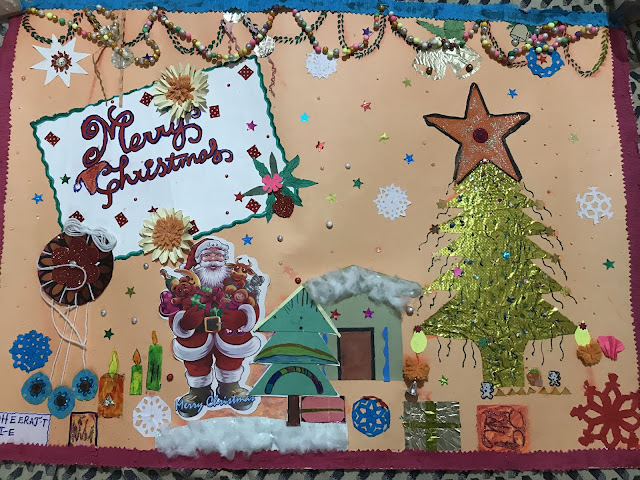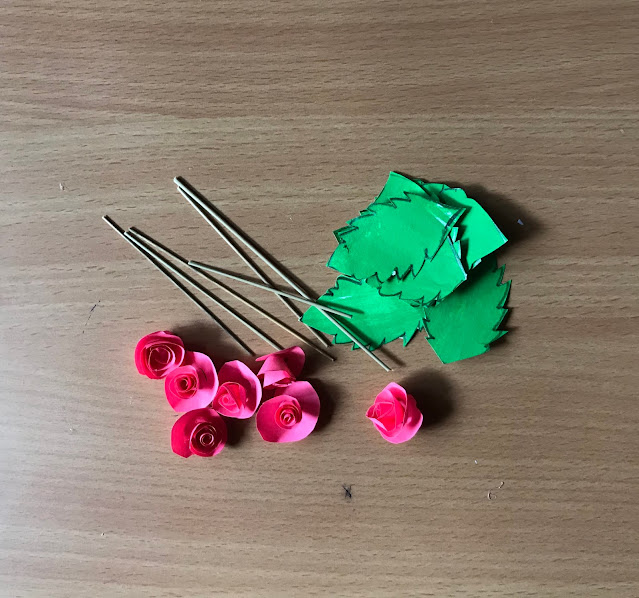Welcome to my Blog friends ,I write about Drawings And Craft Making Ideas and being a full-time creator You find different tips and tutorials ,Drawings for kids. Is a source of Home Decorating ideas.
Tuesday, December 17, 2019
Monday, December 16, 2019
Thursday, December 5, 2019
Bird Craft and Making Ideas
How to Draw a Beautiful Bird with Thread and Colors: A Step-by-Step Guide
Materials Needed:
- Drawing Paper (preferably thick or cardstock)
- Embroidery Threads (in various colors like yellow, blue, green, and white)
- Markers or Color Pencils (red, green, and other vibrant colors for detailing)
- Glue (to fix threads)
- Pencil and Eraser
- Scissors
- Ruler and Tape (optional for borders)
Step 1: Draw the Outline of the Bird
Start by lightly sketching the basic outline of the bird using a pencil. In this case, the bird appears to resemble a peacock or a similar feathered bird. Focus on sketching the head, body, legs, and tail feathers.
- Head and Body: Draw a small circle for the head and a slightly larger oval for the body. The bird should be standing on a patch of land, so add short legs beneath the body.
- Feathers: Extend long tail feathers upwards in an arc shape, giving them a fan-like spread. These will later be filled with thread for added texture.
Step 2: Prepare the Feathers for Thread Art
Once the basic outline is done, it's time to plan the threadwork. The tail feathers will be the highlight of this piece. Here's how to prepare:
- Draw feather lines: Use your pencil to lightly draw curving lines representing the feathers. These lines will guide where you place the threads.
- Color coordination: Choose vibrant thread colors, such as yellow for highlights and green/blue for the main feather lines. You can experiment with different shades.
Step 3: Start Adding Thread Art
Now comes the fun part — adding texture using embroidery thread! Follow these steps:
- Glue the threads: Apply a thin line of glue along the pencil lines of the feathers. Carefully place the embroidery thread on the glue. Start from the base of the feather near the body and extend it outwards.
- Layering the feathers: You can create layered effects by alternating colors. For example, the outer feathers might be yellow with blue accents in between.
- Add volume: To give the feathers a 3D look, you can double or triple the layers of thread on each feather line.
Be sure to work slowly and let the glue dry between layers to avoid smudging.
Step 4: Detail the Body and Head
While the feathers are drying, move on to the bird's body and head. Use colored markers or pencils for this part:
- Body shading: Use darker colors, like blue or green, to shade the bird's body, giving it depth.
- Head details: Draw the eyes, beak, and any other details, like the crest on the head (if you're making it look like a peacock).
- Feet and legs: Draw the legs and feet carefully, using a sharp pencil or fine markers. You can add small claws at the end of the feet.
Step 5: Add Background Details
Once your bird is complete, the background can be enhanced to make the overall artwork pop:
- Grass and Land: Draw a small patch of grass beneath the bird’s feet. Use green markers to give it a natural look, and add some ferns or other plants for extra flair.
- Additional Decorations: You can add red decorative patterns or plants to the side, as seen in the reference image. These can be simple spiral shapes, making the artwork even more dynamic.
Step 6: Border and Finishing Touches
For an added decorative touch, you can frame your drawing:
- Create a border: Use a colored tape or cut-out border to frame the edges of your artwork.
- Final adjustments: Once everything is dried, carefully inspect the drawing. Fix any loose threads or add extra glue where needed.
Step 7: Let it Dry
Once you're happy with your bird and background, let the entire piece dry thoroughly. This ensures that the thread sticks securely to the paper and doesn’t come off later.
This method allows to add texture and dimension to art, making it stand out. Hang it on your wall, share it with friends, or even gift it to someone special. The combination of simple drawing and creative thread art is a beautiful way to express your artistic talent.
Thursday, November 28, 2019
Caterpiller With Waste Caps
 |
catterpiller |
 |
select the colour chart |
 |
attach waste chocolate papers to caps |
 |
glue the caps like caterpiller |
 |
add nose and eyes |
 |
Attach legs |
Tuesday, November 19, 2019
The Musical Donkey Story Chart
Once upon a time, in a quiet village, there lived a donkey and a jackal who were the best of friends. Every night, when the world was fast asleep, they would meet up at the farm to enjoy their secret feasts. During the day, the donkey worked hard, carrying heavy loads for his owner. But when the night fell, the donkey was free to enjoy the pleasures of the farm alongside his friend, the jackal.
Nighttime Adventures at the Farm
Each night, they would sneak into the farm together. The jackal, sly and clever, would feast on the farm's hens and ducks, while the donkey happily munched on the fresh grass in the fields. It was their little routine—simple and satisfying.
After their meal, the donkey, feeling full and overjoyed, would often gaze up at the bright moon and sigh, "Oh, what a beautiful moon! I feel like singing!"
The Jackal's Warning
One night, when the donkey expressed his desire to sing, the jackal quickly warned him, "Don't do that! If you start singing, the farmers will hear us, and we'll be caught!"
But the donkey, stubborn and dreamy-eyed, didn't listen to his wise friend. "How can I stay silent when the moon is so lovely?" he said, ignoring the jackal's caution.
A Song That Spoils the Feast
Without a care in the world, the donkey opened his mouth and started singing at the top of his lungs. His loud braying echoed across the quiet night, waking up the entire farm. The jackal knew trouble was coming, and without a second thought, he ran away to save himself.
Hearing the donkey's loud song, the farmers woke up, grabbed their sticks, and rushed to the farm to see what was going on. When they saw the donkey standing there, braying away without a care, they were furious. They punished the donkey for his loud noise, sending him back home with a lesson he would never forget.
The Moral of the Story
The musical donkey learned the hard way that sometimes it's better to listen to wise advice and think before acting. His stubbornness got him into trouble, while his clever friend, the jackal, escaped without harm.
This story reminds us that there’s a time for everything—a time to be joyful and a time to be careful. Knowing when to stay silent and when to speak up is a lesson worth learning for everyone.
Moral: Always listen to good advice and think before you act, or you might end up in trouble.




















































